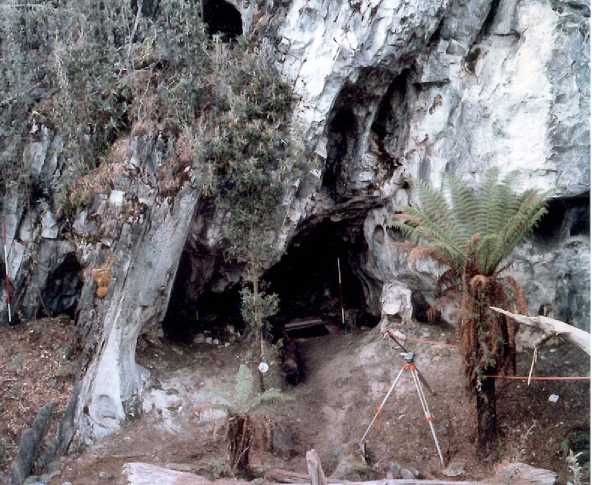The most southern extension of Australia is Tasmania and it has provided a unique record of human occupation from the Late Pleistocene that rivals in richness the Palaeolithic records of southern France. Current evidence indicates that Tasmania was repeatedly occupied from c. 35 ka, though there is a gap in some archaeological sequences from c. 13 to c. 9ka. The Tasmanian record has been shaped by its high latitude (which during the LGM had pronounced glacial activity), topography, and also the environmental shifts resulting from rising sea levels during the LGM. Following marine transgression Tasmania was changed from being part of mainland Australia to an island. Furthermore, there were, and are, great

Figure 12 Nunamira Rockshelter in the Florentine Valley in Tasmania has yielded one of a number of extremely rich occupation sequences from the southwest and these sites represent some of the southernmost known archaeological sites that were occupied during the LGM. Photograph © Richard Cosgrove.
Differences in environment between the wetter and mountainous topography of the western part of the island, and the drier eastern region where dry sclerophyll forest dominates today. Changes in the use of rockshelters, such as Nunamira in the southwest (Figure 12), have been correlated to climatic and environmental changes. The Southern Forest Project investigators argued that people were highly adaptable and exploited opportunities provided by climatic fluctuations to revisit areas and exploit resources where possible. These changes are evidenced in the archaeological records which document the changing use of rockshelters over time where cyclical patterns can be correlated to climatic fluctuation. The Pleistocene sites from the southwest have sequences dominated by the bone of Bennett’s wallaby. Other small marsupials including wombats, possums, and in some places platypus, are present, with the artifact assemblages dominated by quartz, though chert, quartzite, chalcedony, hornfels, and silcrete are also represented.
Interestingly, the southwest was apparently abandoned after the Pleistocene/Holocene transition, with occupation sequences for this period coming from northern and inland Tasmania and the Bassian Plain. People may have migrated north to the mainland before the marine transgression around 12 ka isolated Tasmania from the mainland. Arguably, Tasmania’s geography and climate were the limiting factors in constraining human population. In terms of technology, items such as boomerangs and spear throwers are not known from Tasmania, though thumbnail scrapers (small, marginally retouched flakes) were common in the Pleistocene sequences from the southwest, as is Darwin Glass - which has been found up to 100 km from its source. Certain plant foods such as the daisy yam, while abundant here and exploited widely on the mainland, were never recorded as having been eaten in Tasmania.
Interestingly, of the >600 000 bones recovered during the investigation of the southwest of Tasmania, not a single megafauna bone (or part thereof) was found in a cultural deposit, though megafauna have been found elsewhere on the island. It would appear that the arrival of humans postdated the extinction of the megafauna with no known evidence to support coexistence or interaction with humans.




 World History
World History









